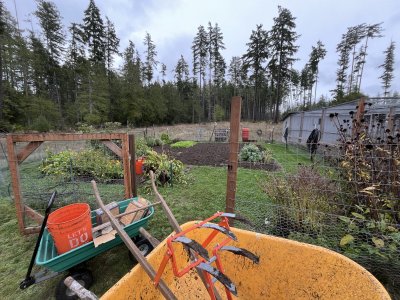- Joined
- Jul 9, 2012
- Messages
- 327
- Reaction score
- 1,117
- Points
- 236
In a world where expenses seem to rise endlessly, finding economical ways to grow your own food can be a game-changer. The good news? Frugal gardening not only helps you save money but also brings you closer to nature and healthier, homegrown produce. If you're worried about the costs, fear not. We've got some down-to-earth, budget-friendly tips to help you nurture your garden without emptying your wallet.

Ever heard that big things have small beginnings? Well, the same goes for gardens. Instead of splurging on fully grown plants, start small with seeds. Seeds are affordable, and there's sheer joy in watching them sprout and grow into robust plants. Plus, you can explore a vast variety of plants, including heirloom options, without burning a hole in your pocket.

Watering your garden can be a significant expense, especially in dry regions. But worry not – there are smart ways to tackle this. Install a rainwater harvesting system to collect nature’s gift for your plants. Mulching, another budget-friendly technique, helps keep the soil moist, reducing the need for frequent watering. It's a win-win: your plants stay happy, and your water bill stays low.

Understanding your local climate, soil, and plant varieties tailored to your area is like having a secret weapon in frugal gardening. Dive into the vast sea of gardening knowledge available online. And don’t shy away from DIY projects. Whether it's building raised beds or creating your own organic fertilizers, the sense of accomplishment and the money you save make it all worthwhile.
So there you have it – a guide to frugal gardening in human terms. With a bit of creativity, patience, and a willingness to learn, you can enjoy the joys of gardening without worrying about your wallet. Happy gardening, and here’s to your flourishing, budget-friendly garden adventure!
Which of the above do you implement on your homestead?
Starting Small with Seeds

Ever heard that big things have small beginnings? Well, the same goes for gardens. Instead of splurging on fully grown plants, start small with seeds. Seeds are affordable, and there's sheer joy in watching them sprout and grow into robust plants. Plus, you can explore a vast variety of plants, including heirloom options, without burning a hole in your pocket.
Get Creative with Containers
Gardening doesn't mean you need fancy pots and planters. Look around your house – you'll find a treasure trove of items perfect for planting. Old buckets, wooden crates, or even broken teacups can be charming homes for your plants. Not only does this save you money, but it also adds a unique touch to your garden.Composting: Turning Trash into Treasure
Here’s a secret: your kitchen scraps and yard waste can be gold for your garden. Composting is like a magic trick where waste turns into nutrient-rich compost, providing your plants with all they need to thrive. It’s not just budget-friendly; it’s eco-friendly too. So, start composting and watch your garden flourish without spending on expensive fertilizers.Water Wisely, Save Intelligently

Watering your garden can be a significant expense, especially in dry regions. But worry not – there are smart ways to tackle this. Install a rainwater harvesting system to collect nature’s gift for your plants. Mulching, another budget-friendly technique, helps keep the soil moist, reducing the need for frequent watering. It's a win-win: your plants stay happy, and your water bill stays low.
Keeping Pests at Bay Naturally
Pests can wreak havoc in your garden, but you don’t need chemical warfare to fend them off. Nature has its solutions. Introduce beneficial insects like ladybugs, which love snacking on harmful bugs. Neem oil and diatomaceous earth are natural pest repellents that won't harm your budget. Plus, there's companion planting – where certain plants naturally deter pests, saving you from costly treatments.Sharing Is Caring
Gardening communities are all about sharing – seeds, knowledge, and even plants. Save seeds from your harvest and participate in seed swaps with fellow gardeners. Plant swapping events are fantastic opportunities to diversify your garden without spending a dime. The spirit of community and sharing not only saves money but also creates lasting friendships.Knowledge Is Power, DIY Is Fun

Understanding your local climate, soil, and plant varieties tailored to your area is like having a secret weapon in frugal gardening. Dive into the vast sea of gardening knowledge available online. And don’t shy away from DIY projects. Whether it's building raised beds or creating your own organic fertilizers, the sense of accomplishment and the money you save make it all worthwhile.
So there you have it – a guide to frugal gardening in human terms. With a bit of creativity, patience, and a willingness to learn, you can enjoy the joys of gardening without worrying about your wallet. Happy gardening, and here’s to your flourishing, budget-friendly garden adventure!
Which of the above do you implement on your homestead?



